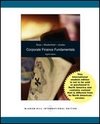
-
 Anglický jazyk
Anglický jazyk
Fortified wine
Source: Wikipedia. Pages: 54. Chapters: Madeira wine, Mistelle, Sherry, Vermouth, Marsala DOC, Malvasia, Port wine, El Puerto de Santa María, Muscat, History of Sherry, Sanlúcar de Barrameda, Buckfast Tonic Wine, Low-end fortified wine, Jura wine, Noilly... Viac o knihe
Na objednávku
17.25 €
bežná cena: 19.60 €
O knihe
Source: Wikipedia. Pages: 54. Chapters: Madeira wine, Mistelle, Sherry, Vermouth, Marsala DOC, Malvasia, Port wine, El Puerto de Santa María, Muscat, History of Sherry, Sanlúcar de Barrameda, Buckfast Tonic Wine, Low-end fortified wine, Jura wine, Noilly Prat, Solera, Cinzano, Pineau des Charentes, Fino, Verdelho, Rasteau AOC, Amontillado, Floc de Gascogne, Dubonnet, Oloroso, Sack, Banyuls AOC, Palo Cortado, Wincarnis, Manzanilla, Angelica wine, Palomino, Muscat de Rivesaltes AOC, Ratafia, Ginger wine, Martini, Boal, Vin de liqueur, Liqueur Muscat, Antonio Benedetto Carpano, Punt e Mes, Tío Pepe, Sercial, Mavrodafni, Malaga, Terras Madeirenses VR, Pommeau, Wild Russian Vanya, Jerez-Xérès-Sherry y Manzanilla de Sanlúcar de Barrameda, Tinta Negra Mole, Complexa, Maderisation, Rebujito, Rinquinquin. Excerpt: Port wine (also known as Vinho do Porto, Porto, and often simply Port) is a Portuguese fortified wine produced exclusively in the Douro Valley in the northern provinces of Portugal. It is typically a sweet, red wine, often served as a dessert wine, and comes in dry, semi-dry, and white varieties. Fortified wines in the style of port are also produced outside of Portugal, most notably in Australia, South Africa, Canada, India, Argentina, and the United States. Under European Union Protected Designation of Origin guidelines, only the product from Portugal may be labelled as Port or Porto. Elsewhere, the situation is more complicated: wines labelled "Port" may come from anywhere in the world, while the names "Dão", "Oporto", "Porto", and "Vinho do Porto" have been recognized as foreign, non-generic names for wines originating in Portugal. Port is produced from grapes grown and processed in the demarcated Douro region. The wine produced is then fortified by the addition of a neutral grape spirit known as aguardente in order to stop the fermentation, leaving residual sugar in the wine, and to boost the alcohol content. The fortification spirit is sometimes referred to as brandy but it bears little resemblance to commercial brandies. The wine is then stored and aged, often in barrels stored in a cave (pronounced "ka-ve" and meaning "cellar" in Portuguese) as is the case in Vila Nova de Gaia, before being bottled. The wine received its name, "Port", in the latter half of the 17th century from the seaport city of Porto at the mouth of the Douro River, where much of the product was brought to market or for export to other countries in Europe. The Douro valley where Port wine is produced was defined and established as a protected region, or appellation in 1756 - making it the third oldest defined and protected wine region in the world after Chianti (1716) and Tokaj (1730). The vineyards that produce Port wine are common along the hillsides that flank the valley of the River D
- Vydavateľstvo: Books LLC, Reference Series
- Rok vydania: 2012
- Formát: Paperback
- Rozmer: 246 x 189 mm
- Jazyk: Anglický jazyk
- ISBN: 9781156125816











